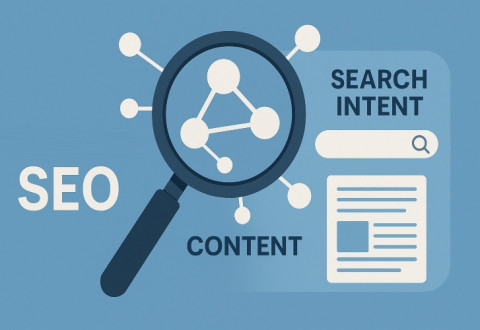Semantic SEO represents a fundamental shift in search engine optimization. It focuses on creating content for topics rather than individual keywords. This approach emphasizes understanding search intent and providing comprehensive information that matches user needs.
What are semantic terms in SEO? These are words and phrases that relate to your main topic conceptually. They help search engines understand content context beyond exact keyword matches. Semantic search engine optimization leverages these relationships to improve search engine rankings significantly.
Unlike traditional keyword-focused strategies, semantic SEO considers context and word relationships. Search engine algorithms now analyze meaning beyond exact matches. They evaluate how concepts connect and relate to each other within your content through semantic understanding.
This evolution addresses the limitations of keyword-stuffed content. Semantic optimization helps search engines understand what your content truly covers. The result is better rankings and more satisfied users searching for comprehensive information.
The Evolution of SEO: From Keywords to Topics
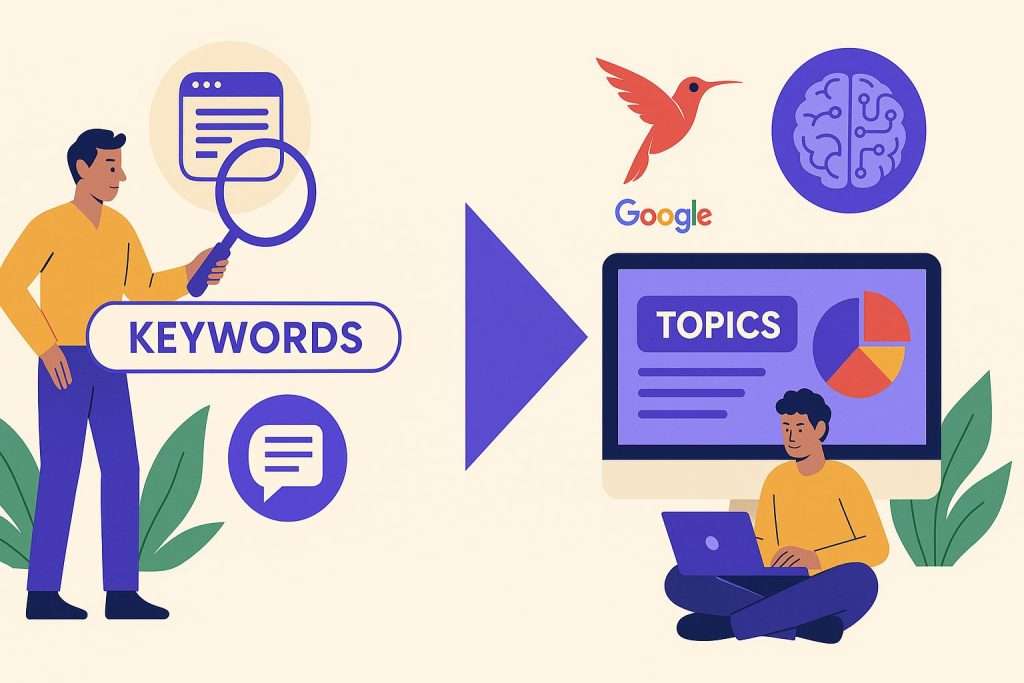
Search engines have transformed dramatically over the past decade. Google’s journey from basic keyword matching to sophisticated topic understanding represents this evolution. The search landscape continues evolving as artificial intelligence becomes more sophisticated.
The 2025 Hummingbird algorithm marked a pivotal shift. This update enabled Google Search to understand conversational queries and context. Instead of matching individual words, Hummingbird focused on complete search query meaning.
RankBrain followed in 2025, introducing machine learning capabilities. This algorithm helped Google process unfamiliar queries by analyzing patterns. RankBrain became the third most important ranking factor within two years of deployment.
BERT arrived in 2025, revolutionizing natural language processing capabilities. This update helped Google understand bidirectional relationships between words. BERT processes how words connect within sentences and paragraphs for better semantic analysis.
The March 2025 core update continued this trend toward semantic understanding. Google’s latest algorithm changes emphasize semantic relevance and source authority. Sites with comprehensive topic coverage and clear entity relationships saw significant improvements in search engine rankings.
These updates demonstrate Google’s commitment to semantic search evolution. Google crawlers now understand a page’s overall topic rather than just individual keywords. This shift requires content creators to think beyond simple keyword optimization approaches.
Keyword Rank Tracker from Rush Analytics: Monitoring Your Semantic SEO Performance

Effective semantic SEO requires precise tracking of your optimization efforts. The Rush Analytics Keyword Rank Tracker provides essential insights into your semantic optimization performance across the evolving search landscape.
This powerful tool monitors your root domain’s positions across semantically related keywords. You can track how your content performs for topic clusters and related search queries. The tracker reveals ranking fluctuations that indicate semantic optimization success.
The tool’s comprehensive dashboard shows position changes for hundreds of keyword ideas simultaneously. You can monitor your progress across different semantic themes and topics with varying search volume. This data helps you understand which content resonates with Google’s semantic algorithms.
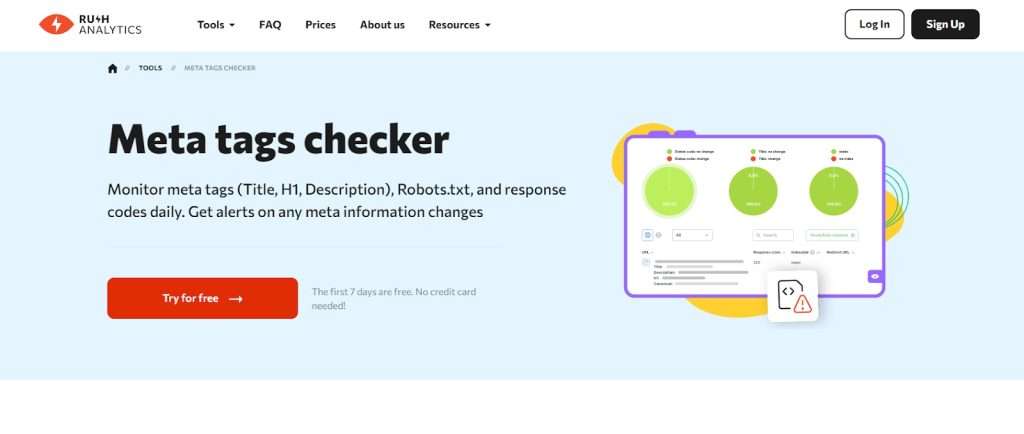
The Meta Tags Checker from Rush Analytics ensures your meta tags are optimized for semantic relevance, complementing the tracker’s insights by verifying that your content aligns with search engine expectations.
Rush Analytics also tracks competitor positions for similar semantic topics. This competitive intelligence reveals opportunities in your semantic strategy. You can identify gaps where your content could capture additional semantic traffic from users searching for related information.
The platform’s SERP monitoring capabilities extend beyond basic rankings. It tracks featured snippets, People Also Ask boxes, and knowledge panels. These SERP features often reward strong semantic optimization efforts and comprehensive topic coverage.
Regular monitoring with Rush Analytics helps refine your semantic approach continuously. The data shows which topics need additional coverage or optimization. This ongoing analysis ensures your semantic SEO strategy remains effective and adapts to algorithm changes.
Why Is Semantic SEO Important?

Semantic SEO delivers substantial benefits for modern search optimization. Google’s E-E-A-T criteria increasingly favor content with strong semantic signals. This approach aligns with search engines’ growing sophistication.
Semantic optimization helps you rank for broader keyword sets. Instead of targeting individual terms, you capture traffic from related searches. This multiplies your content’s visibility potential across numerous queries.
User experience improves significantly through semantic approaches. Visitors find comprehensive information that fully addresses their needs. This leads to longer engagement times and higher conversion rates.
SERP features favor semantically optimized content. Featured snippets, knowledge panels, and People Also Ask boxes often showcase well-structured semantic content. These positions provide enhanced visibility and authority.
Search engines reward topical authority through semantic signals. Comprehensive coverage of related concepts demonstrates expertise. This authority translates into improved rankings across your entire topic cluster.
Voice search optimization benefits from semantic strategies. Natural language queries align perfectly with semantic content structure. As voice search grows, semantic optimization becomes increasingly valuable for capturing this traffic.
Free 7 days access to all tools. No credit card required!
Попробовать бесплатно
Understanding Entities in Semantic SEO
Entities form the foundation of semantic search optimization. These are specific people, places, organizations, or concepts that carry distinct meaning. Google’s Knowledge Graph contains over 8 billion entities and 800 billion facts.
Search engines use entities to understand content relationships. When you mention “Tim Cook” and “Apple,” Google recognizes the CEO relationship. This entity connection helps classify your content’s topic and authority.
Context vectors and embeddings represent how entities relate mathematically. These systems place related concepts close together in vector space. Your content’s embedding should align with user query embeddings for optimal visibility.
Google Knowledge Graph organizes these entity relationships systematically. Wikipedia often serves as the primary entity source. Connecting your content to recognized entities strengthens semantic relevance.
Entity recognition goes beyond simple keyword matching. Search engines analyze co-occurrence patterns and contextual relationships. They understand how entities interact within your content’s narrative.
Successful semantic optimization requires strategic entity inclusion. You must mention relevant entities naturally within your content. This approach signals topical authority while maintaining readability and user value.
Topic Mapping and Content Clusters
Topic mapping visualizes relationships between interrelated concepts on your website. This strategic approach organizes content around central themes with supporting subtopics.
The pillar cluster model represents one effective content organization strategy. Central pillar pages cover broad topics comprehensively. Supporting cluster pages explore specific subtopics in detail.
Content hubs provide another structural approach to topic organization. These create centralized resources around specific themes. Hub pages link to related content throughout your site.
Topic maps show connections between main topics and supporting concepts. This visualization helps identify content gaps and opportunities. You can plan comprehensive coverage that addresses user needs thoroughly.
Interrelated concepts strengthen your topical authority signals. When you cover related topics comprehensively, search engines recognize your expertise. This authority extends across your entire topic cluster.
The content model should reflect natural topic relationships. Users should easily navigate between related concepts. This internal structure mirrors how people think about topics naturally.
Topically Relevant Content Creation
Creating topically relevant content requires deep understanding of your subject matter. Content must thoroughly examine topics rather than providing surface-level coverage.
Topic outlines serve as planning documents for comprehensive coverage. These documents list all subtopics, related concepts, and questions to address. Comprehensive outlines ensure complete topic exploration.
In-depth content performs better in semantic search environments. Google prioritizes pages that fully satisfy user intent. Shallow content rarely achieves strong semantic optimization results.
User intent analysis drives effective topical content creation. Understanding why people search helps create relevant information. Your content should anticipate and answer related questions comprehensively.
Comprehensive guides demonstrate topical authority effectively. These resources cover topics from multiple angles and perspectives. They provide value that users cannot find elsewhere easily.
Unique viewpoints strengthen your content’s semantic value. Original insights and expert analysis differentiate your content. This uniqueness helps establish thought leadership within your topic area.
Targeting Multiple Keyword Variations
Semantic SEO enables efficient targeting of multiple related keywords. Single pages can rank for numerous similar search terms naturally. This approach eliminates the need for separate pages targeting keyword variations.
Traditional SEO often created different pages for “best smartphones” and “top mobile phones.” Semantic optimization covers both concepts on one comprehensive page. This consolidation strengthens topical authority signals.
Medium-tail and long-tail keywords benefit from semantic approaches. These more specific queries often relate to the same core topic. Comprehensive content naturally incorporates these keyword variations.
Similar keywords cluster around central topics organically. When you write about “digital marketing,” related terms like “online marketing” appear naturally. This semantic relationship strengthens your content’s relevance signals.
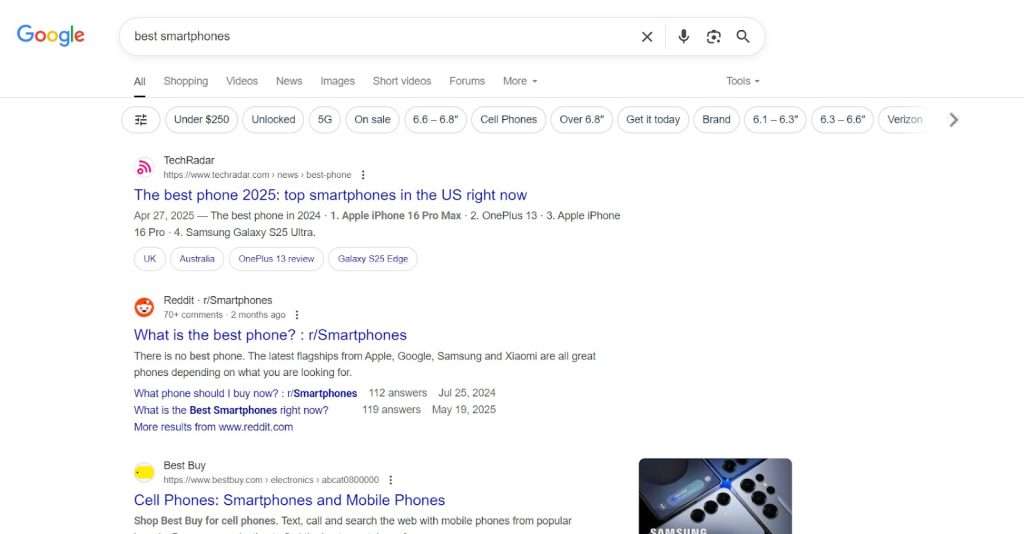
Single-page optimization for keyword clusters requires strategic planning. You must weave related terms throughout your content naturally. Forced keyword insertion damages readability and user experience.
The semantic approach focuses on comprehensive topic coverage. When you thoroughly explore a subject, keyword variations emerge naturally. This organic inclusion satisfies both users and search algorithms effectively.
Structured Data and Schema Markup
Schema markup provides crucial semantic context to search engines. This structured data helps algorithms understand what your content represents. Schema.org vocabulary offers standardized markup options.
JSON-LD format provides the cleanest implementation for structured data. This approach separates markup from visible content cleanly. Google recommends JSON-LD for most schema implementations.
Rich results reward proper schema implementation significantly. Enhanced search listings increase click-through rates substantially. These visual enhancements improve your content’s search visibility.
Knowledge panel appearances often result from strategic schema usage. Proper entity markup helps Google understand your content’s relationships. This understanding can lead to prominent knowledge panel features.
Connected Schema Markup with proper @id references creates knowledge graphs. These connections help search engines understand entity relationships. Comprehensive markup strengthens your content’s semantic signals.
Regular schema validation ensures proper implementation and effectiveness. Google’s Structured Data Testing Tool identifies markup errors. Clean, valid schema maximizes your semantic optimization benefits.
Semantic HTML and Content Structure
Semantic HTML elements provide meaningful structure beyond visual presentation. These elements help search engines understand content organization and hierarchy.
Heading tags create logical content outlines that algorithms analyze. Proper H1, H2, and H3 usage signals content importance and structure. This hierarchy guides both users and search engines effectively.
HTML5 semantic tags like <article>, <section>, and <nav> provide additional context. These elements clarify content purpose and relationships. Search engines use this structural information for better understanding.
Content meaning emerges through proper semantic element usage. Lists, definitions, and other structured elements enhance comprehension. This clarity benefits both accessibility and search optimization.
Featured snippet optimization benefits from semantic HTML structure. Well-structured content has higher chances of appearing in featured positions. Clean markup improves extraction for these prominent SERP features.
Semantic structure should match content organization naturally. Visual design and HTML structure should align logically. This consistency creates better user experiences and clearer search signals.
Internal Linking for Semantic Relationships
Strategic internal linking establishes semantic relationships between content pieces throughout your site. These connections help search engines understand topic relationships across your content ecosystem.
Anchor text should describe the linked content’s topic clearly. Descriptive link text provides context about the destination page’s content. This context helps search engines understand content relationships and supports your overall link building strategy.
Topical relationships guide effective internal linking strategies for better semantic signals. Related content should link to each other naturally within your site architecture. These connections reinforce your site’s topical authority signals across multiple keyword ideas.
Content connections through internal links distribute authority throughout your site systematically. Strategic linking helps important pages gain ranking power from supporting content. This distribution strengthens your entire topic cluster and improves search engine rankings.
Link structure should reflect your content hierarchy logically for optimal semantic understanding. Main topic pages should link to supporting subtopic content appropriately. This organization mirrors how users explore topics naturally and supports comprehensive topic coverage.
Google crawlers prioritize well-connected content with strong internal link patterns consistently. Sites with logical link structures often outperform isolated content significantly. Strategic internal linking becomes increasingly important for semantic success in the current search landscape.
Finding Semantic Keywords
Google’s search features provide excellent semantic keyword research opportunities. The autocomplete function suggests related queries users actually search for, revealing valuable keyword ideas.
People Also Ask boxes reveal common questions about your topic. These questions represent genuine user needs and search intent. Incorporating these questions strengthens your content’s semantic relevance and helps capture traffic from related search queries.
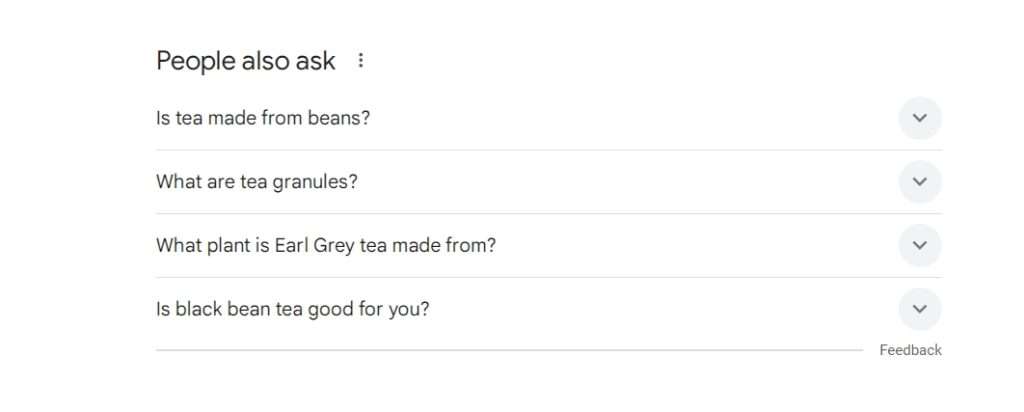
Related searches appear at the bottom of search results pages. These suggestions show semantically related terms users searching for your topic explore. This information helps expand your keyword understanding and identify additional optimization opportunities.
LSI keywords emerge naturally from comprehensive topic research. These latent semantic indexing terms relate to your main topic conceptually. They appear when you thoroughly explore subject matter and consider user’s search query variations.
Semantic keyword research focuses on concepts rather than individual terms. Understanding topic relationships helps identify relevant keyword ideas with varying search volume. This conceptual approach improves your content’s semantic strength and broader topic coverage.
Question phrases reveal user intent behind semantic searches perfectly. These longer queries often indicate specific information needs. Addressing these questions enhances your content’s semantic value and helps capture long-tail search traffic effectively.
Content Optimization Tools
Modern content editors help structure articles based on competitor analysis. These tools analyze top-ranking content to identify optimization opportunities. Real-time feedback guides content creation effectively.
Content creation tools provide semantic suggestions during writing. They recommend related terms and concepts to include. This guidance helps create more comprehensive semantic content.
Keyword optimization tools analyze semantic relationships between terms. They identify gaps in your content’s topic coverage. This analysis helps create more thorough semantic optimization.
Content structure tools suggest organization improvements for better semantic signals. They analyze heading hierarchy and content flow. These recommendations enhance both user experience and search optimization.
Real-time feedback systems help refine content as you create it. These tools analyze semantic strength continuously. Immediate suggestions improve content quality during the writing process.
AI-powered content tools increasingly focus on semantic optimization. These systems understand topic relationships automatically. They suggest improvements that align with semantic search principles.
Measuring Semantic SEO Success
Effective measurement requires tracking multiple semantic SEO metrics beyond basic rankings. Success indicators include improvements across semantically related keyword sets and enhanced performance in the competitive search landscape.
Ranking improvements should occur for both target and related keywords systematically. Semantic optimization often increases visibility for unexpected related terms through comprehensive topic coverage. This broader ranking success indicates effective semantic strategies and proper search engine algorithms understanding.
Traffic increases from semantically related searches demonstrate optimization success clearly. Users searching for varied related queries finding your content shows comprehensive topic coverage. This traffic diversity strengthens overall organic performance and indicates strong semantic understanding.
User engagement metrics reveal semantic optimization effectiveness through behavioral signals. Time on page, bounce rate, and pages per session improve with better semantic matching. Users stay longer when content fully satisfies their search query needs comprehensively.
SERP feature appearances increase with strong semantic optimization efforts consistently. Featured snippets, knowledge panels, and People Also Ask boxes reward semantic content. These prominent positions indicate algorithm recognition of your topical authority and comprehensive keyword ideas coverage.
Conversion rates often improve through semantic optimization approaches significantly. Better user intent matching leads to more qualified traffic from relevant search volume. Visitors find exactly what they seek, resulting in higher conversion rates and business success.
Long-term traffic stability improves with semantic optimization strategies substantially. Algorithm updates affect semantically optimized content less severely than traditional keyword-focused content. This stability provides more predictable organic traffic performance across algorithm changes.
Conclusion
Semantic SEO represents the future of search engine optimization strategies in our evolving digital landscape. As search engine algorithms continue advancing through artificial intelligence and natural language processing, semantic approaches become essential for sustainable success.
The semantic web enables more sophisticated content understanding than ever before possible. Search algorithms now comprehend context, relationships, and user intent deeply through advanced semantic analysis. This evolution requires optimization strategies that match algorithmic sophistication and user expectations.
Future-proofing your content requires embracing semantic optimization principles now, before competitors adapt. Traditional keyword-focused approaches become less effective as search evolves toward understanding topics comprehensively. Semantic strategies align with search engines’ fundamental goal of delivering relevant, helpful content to users searching for information.
Natural language processing advances will continue enhancing search capabilities significantly. Voice search, AI overviews, and conversational search interfaces all benefit from semantic optimization approaches. Early adoption of these strategies provides competitive advantages in the rapidly changing search landscape.
Semantic strategy implementation creates sustainable SEO success regardless of future algorithm changes. This approach focuses on user value rather than gaming search systems temporarily. Such strategies remain effective as search engine algorithms evolve continuously toward better semantic understanding and user satisfaction.
FAQs
What is an example of semantic SEO?
A semantic SEO example would be creating a comprehensive guide about “digital marketing” that naturally covers related concepts like social media marketing, content marketing, email marketing, and SEO. Instead of separate pages for each term, one authoritative page addresses the entire topic ecosystem.What is the difference between SEO and semantic SEO?
Traditional SEO focuses on individual keywords and exact matches, while semantic SEO emphasizes topics, context, and related concepts. Semantic SEO creates comprehensive content that satisfies user intent broadly rather than targeting specific keyword phrases individually.Are semantic tags good for SEO?
Yes, semantic HTML tags like header, nav, article, and section help search engines understand content structure and meaning. These tags provide context beyond visual presentation, improving both accessibility and search engine comprehension of your content organization.


